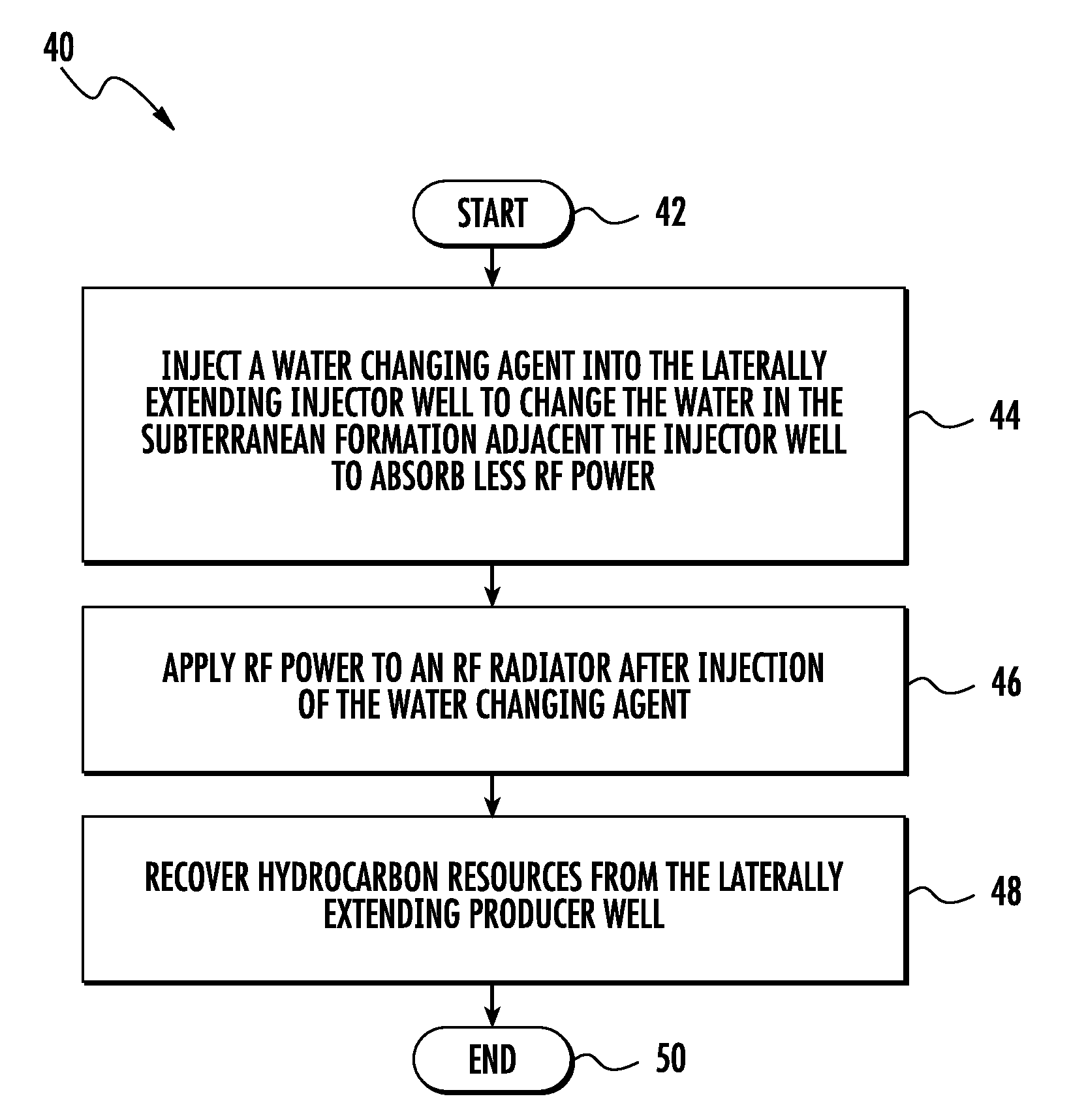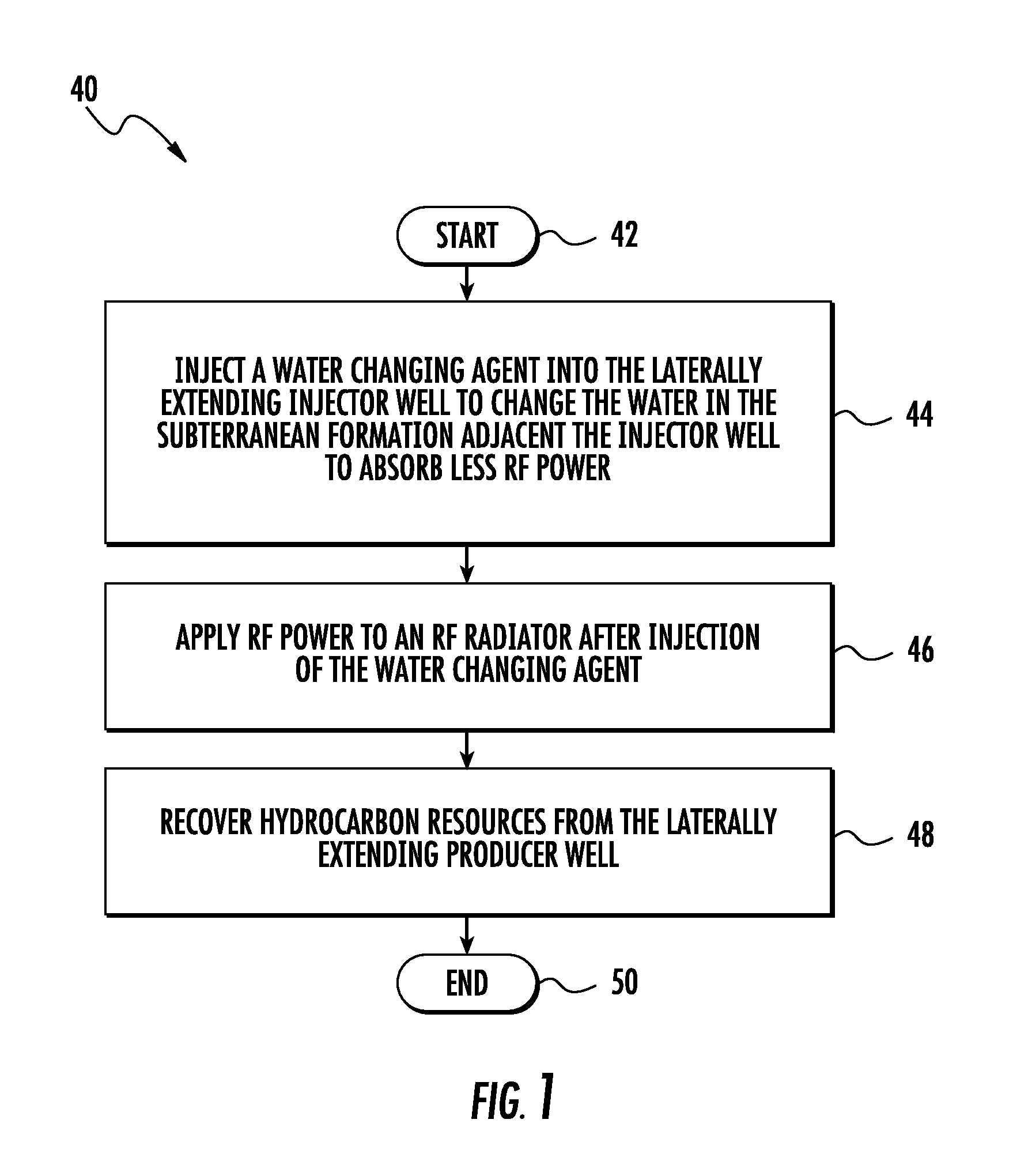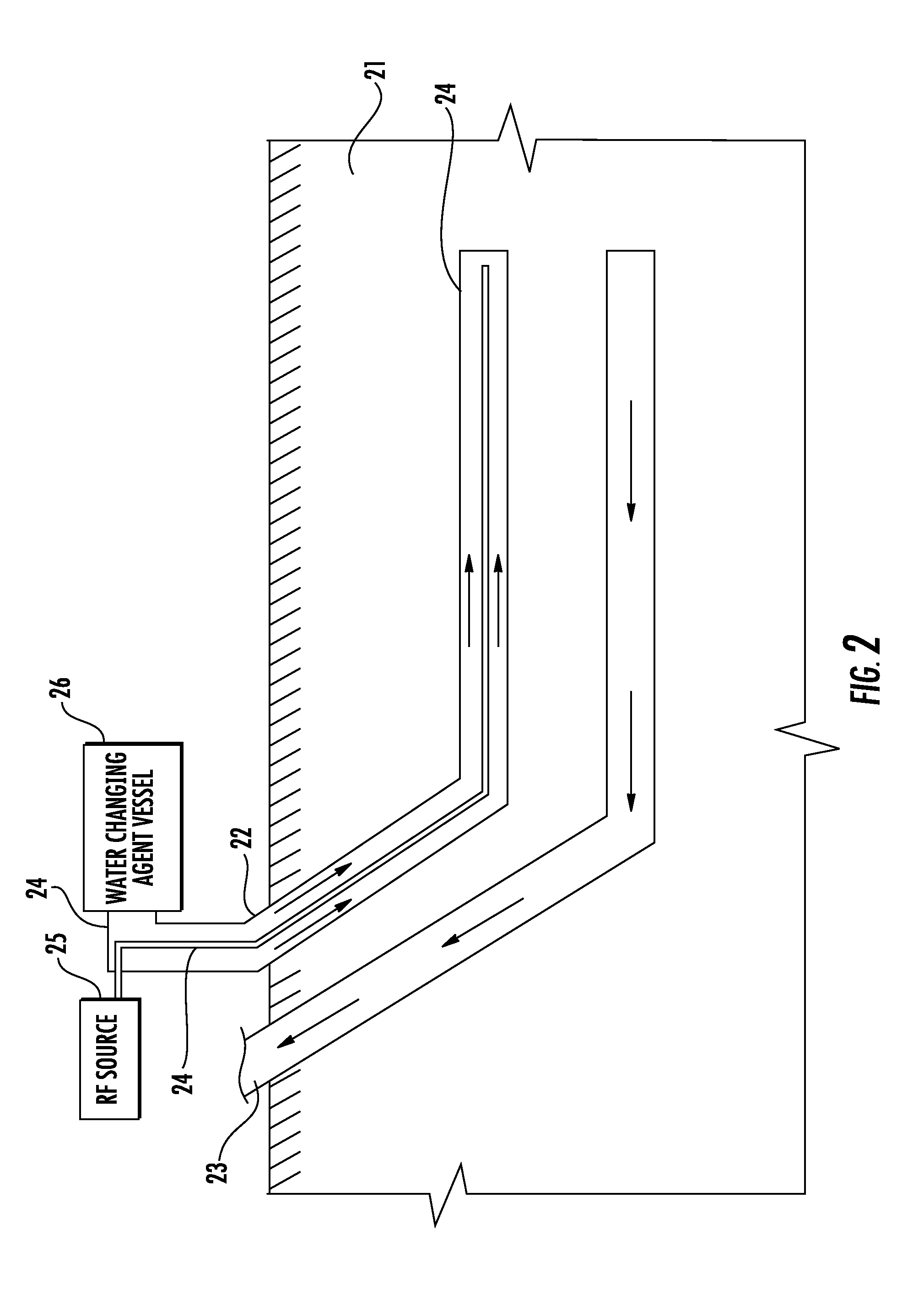Method for hydrocarbon recovery using a water changing or driving agent with RF heating
a technology of hydrocarbon resources and heating, applied in fluid removal, earth-moving drilling, borehole/well accessories, etc., can solve the problems of high viscosity hydrocarbon resources, heavy oils, and energy consumption of conventional hydrocarbon resources, and achieve the effect of efficient recovery of hydrocarbon resources, less energy, and faster recovery of hydrocarbons
- Summary
- Abstract
- Description
- Claims
- Application Information
AI Technical Summary
Benefits of technology
Problems solved by technology
Method used
Image
Examples
Embodiment Construction
[0032]The present invention will now be described more fully hereinafter with reference to the accompanying drawings, in which preferred embodiments of the invention are shown. This invention may, however, be embodied in many different forms and should not be construed as limited to the embodiments set forth herein. Rather, these embodiments are provided so that this disclosure will be thorough and complete, and will fully convey the scope of the invention to those skilled in the art. Like numbers refer to like elements throughout, and prime and multiple prime notation is used to indicate similar elements in alternative embodiments.
[0033]Referring now to the flowchart 40 in FIG. 1 and FIG. 2, a method of processing a hydrocarbon resource in a subterranean formation 21 is illustrated. The subterranean formation 21 includes a laterally extending injector well 22, a laterally extending producer 23 well below the laterally extending injector well. Water and hydrocarbon resources are wit...
PUM
 Login to View More
Login to View More Abstract
Description
Claims
Application Information
 Login to View More
Login to View More - R&D
- Intellectual Property
- Life Sciences
- Materials
- Tech Scout
- Unparalleled Data Quality
- Higher Quality Content
- 60% Fewer Hallucinations
Browse by: Latest US Patents, China's latest patents, Technical Efficacy Thesaurus, Application Domain, Technology Topic, Popular Technical Reports.
© 2025 PatSnap. All rights reserved.Legal|Privacy policy|Modern Slavery Act Transparency Statement|Sitemap|About US| Contact US: help@patsnap.com



